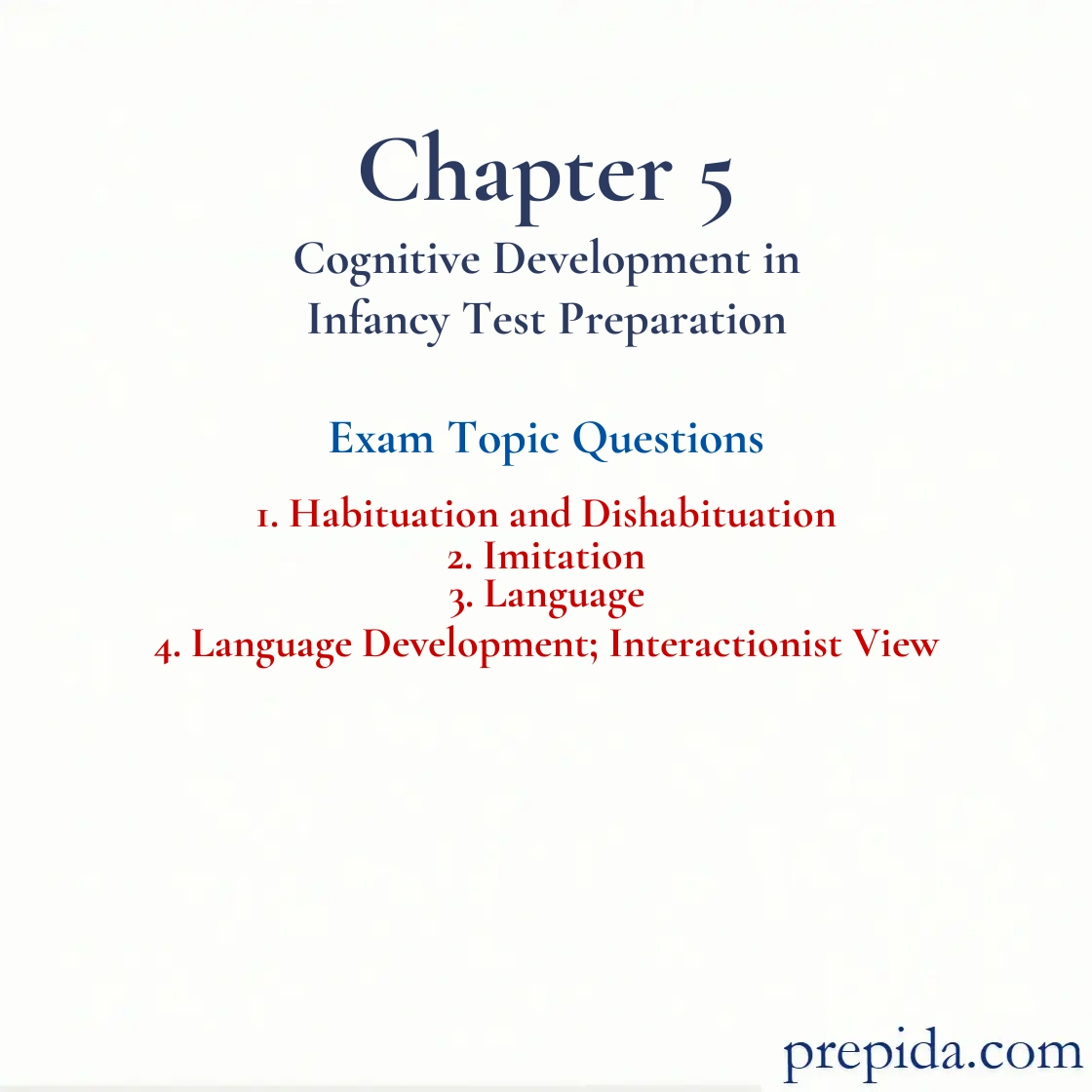
Farah showed her baby a colorful block. She then hid the block and showed it to the baby again and repeated the activity for some time. After the first few attempts, the baby, who initially paid close attention to the block, became disinterested in the block. In the context of attention, this scenario most likely demonstrates the process of
- distraction.
- imitation.
- habituation.
- dishabituation.
Habituation: Decreased responsiveness to a stimulus after repeated presentations of the stimulus.
In the context of cognitive development, decreased responsiveness to a stimulus after repeated presentations of the stimulus is known as
- assimilation.
- habituation.
- deferred imitation.
- perceptual categorization.
Habituation: Decreased responsiveness to a stimulus after repeated presentations of the stimulus.
Eight-month-old Andrew suffered brain damage at birth. His identical twin, Alex, had no brain damage. Research on habituation will likely predict that
- Alex will not habituate as well as Andrew.
- both twins will habituate at about the same level.
- Andrew will not habituate as well as Alex.
- Alex will not exhibit any sort of habituation.
Habituation: Decreased responsiveness to a stimulus after repeated presentations of the stimulus.
Which of the following terms defines a process that occurs when individuals focus on the same object and are able to track another's behavior?
- deferred imitation
- joint attention
- dishabituation
- accommodation
Joint Attention: Process that occurs when individuals focus on the same object and are able to track another’s behavior, one individual directs another’s attention, and reciprocal interaction takes place.
Andy is nine months old, but he seems to be struggling with following another's gaze and directing adults' attention. These could be early indicators of
- autism.
- dyslexia.
- ADHD.
- low vision.
Ageism: Prejudice against others because of their age, especially prejudice against older adults.
Which of the following is a requirement for joint attention?
- an ability to manipulate objects
- an ability to track another's behavior
- a lack of interest in others
- an intense interest in a particular object
Joint Attention: Process that occurs when individuals focus on the same object and are able to track another’s behavior, one individual directs another’s attention, and reciprocal interaction takes place.
Which of the following statements about joint attention is true?
- Joint attention requires the ability to track one's own behavior.
- Emerging forms of joint attention occur at about 4 to 5 months.
- Frequently engaging in joint attention hinders infants' vocabulary development.
- Joint attention requires reciprocal interaction.
Joint Attention: Process that occurs when individuals focus on the same object and are able to track another’s behavior, one individual directs another’s attention, and reciprocal interaction takes place.
Using habituation experiments, some researchers have found that infants as young as ________ can group together objects with similar appearances.
- five to six days
- three to four weeks
- three to four months
- five to six months
A newborn baby widens her eyes after her mother widens her eyes and mouth and smiles at the baby. Meltzoff would say that this baby is
- exhibiting a reflex.
- engaging in true imitation.
- showing deferred imitation.
- habituating to the mother's facial expression.
Identify a true statement about the work of Andrew Meltzoff on imitation in infant development.
- He emphasizes that an infant's imitative abilities resemble a hardwired response.
- He concluded that infants blindly imitate everything they see.
- He held that deferred imitation does not occur until about 18 months of age.
- He sees infants' imitative abilities as biologically based.
Mandy, a 9-month-old infant, saw a little girl in a toy store pushing buttons on a musical toy that plays a different song for each button. When Mandy's grandmother gave the same toy to her the following day, Mandy immediately started pushing the buttons. In the context of infants' cognitive development, Mandy was most likely displaying
- dishabituation.
- categorization.
- object permanence.
- deferred imitation.
A form of communication that is based on a system of symbols is called
- syntax.
- grammar.
- language.
- phonology.
Language: A form of communication, whether spoken, written, or signed, that is based on a system of symbols. Language consists of the words used by a community and the rules for varying and combining them.
In her book Growing Up with Language, which of the following suggestions did Naomi Baron provide for facilitating language development in toddlers?
- Remember to listen.
- Supply words and thoughts for the child to avoid frustration.
- Use questions that encourage the child to answer "yes" or "no."
- Let the toddler know when he or she is not being clear in communication.
Language: A form of communication, whether spoken, written, or signed, that is based on a system of symbols. Language consists of the words used by a community and the rules for varying and combining them.
The interactionist view of language development emphasizes that
- the primary language center and the biological language device are both needed for language to develop.
- language development occurs largely because of positive reinforcement.
- the development of receptive language is universal, whereas the development of spoken language differs across cultures.
- both biology and experience contribute to language development.
Language: A form of communication, whether spoken, written, or signed, that is based on a system of symbols. Language consists of the words used by a community and the rules for varying and combining them.